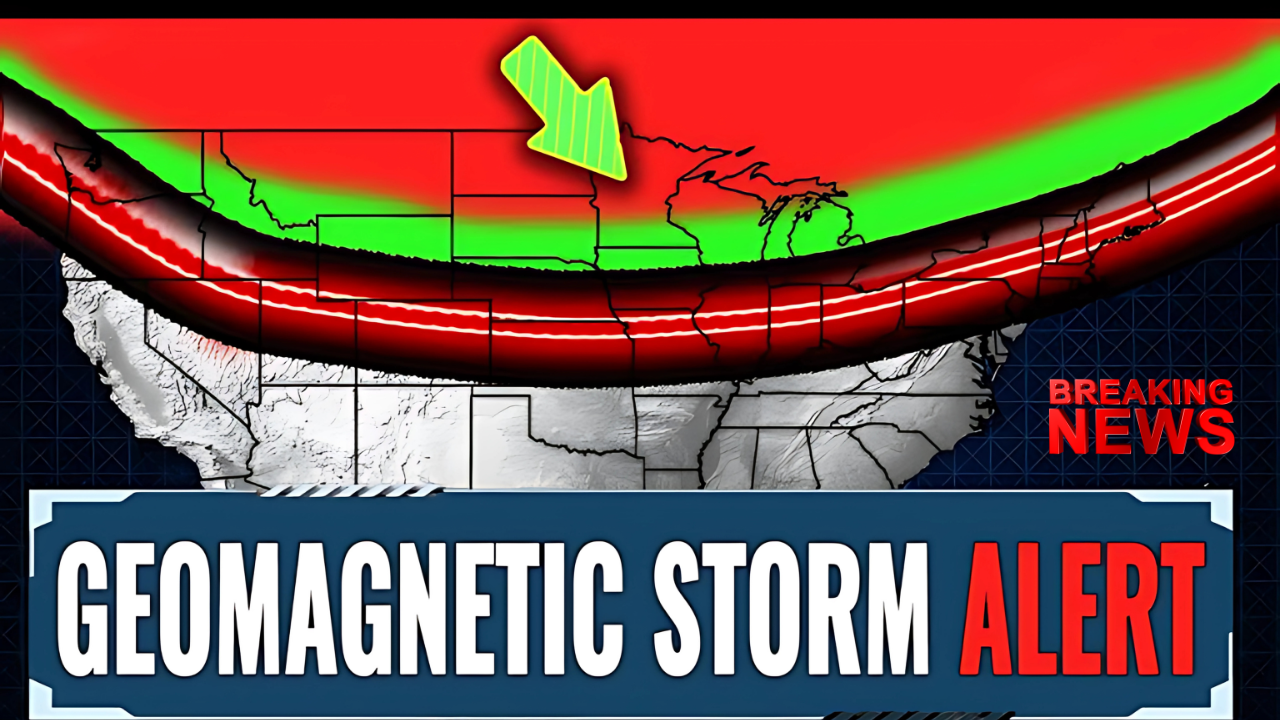On the evening of June 1, 2025, something extraordinary might unfold in the skies above Texas—a sight that most Texans have never witnessed in their lifetime. Thanks to a powerful geomagnetic storm, the aurora borealis, commonly known as the northern lights, could become visible in parts of the Lone Star State. As a lifelong Texan, I can’t help but feel a mix of excitement and disbelief at the thought of seeing this natural wonder, usually reserved for polar regions, right here in my backyard. Let’s dive into what’s causing this rare event, where you might catch a glimpse, and why it’s a big deal for skywatchers and scientists alike.
What’s Behind This Rare Event?
A Severe Geomagnetic Storm Hits Earth
The aurora borealis is set to make a potential appearance due to a severe geomagnetic storm classified as G4 on the space weather scale—a level that indicates significant solar activity. This storm originates from a coronal mass ejection (CME), a massive burst of solar material and magnetic energy hurled from the sun toward Earth. According to forecasts, this particular CME is traveling at an astonishing speed of nearly 1,000 kilometers per second, and its impact on Earth’s magnetic field is what could spark the northern lights as far south as Texas.
I remember hearing about the northern lights as a kid, imagining vibrant greens and purples dancing across the sky, but I never thought I’d have a chance to see them without traveling to Alaska or Norway. The idea that a solar event millions of miles away could create such a spectacle here feels almost magical. But it’s not just about beauty—this storm also raises concerns about its potential effects on technology, which we’ll explore later.
How Does a Geomagnetic Storm Create the Aurora?
When a CME collides with Earth’s magnetosphere, it disrupts the planet’s magnetic field, sending charged particles streaming toward the atmosphere. These particles interact with gases like oxygen and nitrogen, producing the glowing colors we associate with the aurora borealis—typically green, but sometimes red, purple, or blue depending on the altitude and gas composition. Normally, this phenomenon is confined to high-latitude regions near the Arctic Circle, but a G4-level storm can push the auroral oval much farther south, potentially reaching states like Texas.
The science behind it is fascinating, but what really captivates me is the thought of looking up and seeing something so otherworldly. My grandfather used to tell stories about rare natural events he’d witnessed, like meteor showers and eclipses, and I can’t wait to have a story of my own to share—if the weather cooperates, that is.
Where in Texas Might the Northern Lights Be Visible?
Northernmost Regions Offer the Best Chance
For Texans hoping to catch a glimpse of the aurora borealis, the northernmost parts of the state are your best bet. Areas like the Panhandle, including cities such as Amarillo and Lubbock, are closer to the auroral oval’s expanded range during a G4 storm. However, forecasts suggest that with a long-exposure camera, the lights might even be detectable as far south as the Austin-San Antonio corridor or Houston.
I’ve already marked my calendar and plan to drive up to a rural spot near Wichita Falls with my family. We’re packing a picnic, some blankets, and my old DSLR camera, hoping to capture the moment if the lights decide to show up. There’s something thrilling about the uncertainty of it all—nature doesn’t make promises, but the possibility is enough to get us out under the stars.
Challenges to Visibility in Texas
While the geomagnetic storm offers a rare opportunity, visibility in Texas isn’t guaranteed. Light pollution in urban areas like Dallas or Houston could make it harder to see the faint glow of the aurora, so heading to a dark-sky location is key. Additionally, cloud cover or haze might obstruct the view, especially in late spring when Texas weather can be unpredictable. I’ve checked the forecast for June 1, and so far, it looks clear in the north, but I’m keeping my fingers crossed that a sudden storm doesn’t roll in.
Another challenge is that the aurora might not be as vivid to the naked eye in Texas as it would be farther north. In past G4 events, like the one in May 2024, some southern states reported seeing the lights only through cameras, which are more sensitive to low light. Still, even a faint shimmer would be a once-in-a-lifetime experience for most of us here.
A Historical Perspective on Geomagnetic Storms
The May 2024 Storm: A Benchmark for What’s Possible
The last time the northern lights were visible this far south was during a massive geomagnetic storm in May 2024, which was the strongest since 2005. That event brought the aurora borealis to places like South Texas, with reports of glowing skies as far as the Gulf Coast. I wasn’t in Texas at the time—I was visiting friends in Colorado—but I remember scrolling through social media, seeing photos of the lights over places like Corpus Christi, and wishing I’d been there to witness it.
This upcoming storm isn’t expected to be quite as intense as the May 2024 event, but its G4 classification still makes it significant. Federal forecasters at NOAA’s Space Weather Prediction Center have noted that past storms of this strength have produced auroras visible across a wide swath of the U.S., and Texas is right on the edge of that potential viewing zone.
The Broader Impact of Solar Activity
While the aurora is a stunning byproduct of geomagnetic storms, these events can also have less picturesque consequences. Severe storms like this one can interfere with power grids, satellite operations, and GPS systems, prompting infrastructure operators to stay on alert. I’ve read about historical events like the 1859 Carrington Event, where a solar storm was so powerful that it caused telegraph systems to fail and even sparked fires. In today’s tech-dependent world, a similar event could cause widespread disruptions—something that makes me a bit uneasy as I think about our reliance on electricity and communication networks.
On a smaller scale, this storm might also affect other skywatching events, like meteor showers, by creating atmospheric disturbances that obscure faint celestial objects. For amateur astronomers in Texas, it’s a trade-off: the chance to see the northern lights might come at the expense of other stargazing plans.
How to Prepare for Aurora Viewing in Texas
Tips for Skywatchers
If you’re as excited as I am to potentially see the northern lights, here are a few tips to make the most of the experience:
-
Find a Dark-Sky Location: Head away from city lights to a rural area with minimal light pollution. State parks or open fields are great options.
-
Bring a Camera: A DSLR or even a smartphone with a good low-light mode can help you capture the aurora, even if it’s faint to the naked eye.
-
Check the Forecast: Keep an eye on both the weather forecast and NOAA’s Space Weather Prediction Center updates for the latest on geomagnetic activity.
-
Be Patient: The aurora can be unpredictable, so plan to spend a few hours outside. Bring a chair, some snacks, and warm clothes—June nights in Texas can still get chilly.
I’m already imagining the scene: my kids bundled up in blankets, pointing at the sky in awe if we’re lucky enough to see those shimmering lights. Even if we don’t, it’ll be a memorable night of stargazing and family time.
What to Expect During the Event
If the aurora does appear, it might look like a faint greenish glow on the northern horizon, possibly with hints of red or purple if the storm intensifies. During peak activity, you might even see subtle waves or ripples in the sky. For those of us in Texas, the display won’t be as dramatic as it would be in, say, Alaska, but it’s still a rare treat. I’ve been reading up on aurora photography tips, and I’m hoping to get a decent shot to frame and hang in our living room—a little piece of cosmic history from 2025.
Why This Matters Beyond the Spectacle
The chance to see the northern lights in Texas isn’t just a fun outing—it’s a reminder of our connection to the universe and the powerful forces at play beyond our planet. Solar activity like this can teach us about the sun’s cycles, which peak every 11 years, and how they affect life on Earth. The 2024-2025 period has been particularly active, with multiple geomagnetic storms bringing the aurora to unusual latitudes.
For me, it’s also a moment to reflect on how small we are in the grand scheme of things. In a world that often feels chaotic, with news of political decisions or economic shifts dominating headlines, a natural event like this feels like a quiet gift—a chance to pause, look up, and marvel at something bigger than ourselves.
Frequently Asked Questions (FAQs)
What causes the northern lights to be visible in Texas?
A severe G4 geomagnetic storm, triggered by a coronal mass ejection from the sun, can push the aurora borealis far south, potentially reaching Texas on June 1, 2025.
A severe G4 geomagnetic storm, triggered by a coronal mass ejection from the sun, can push the aurora borealis far south, potentially reaching Texas on June 1, 2025.
Where in Texas is the best place to see the aurora borealis?
The northernmost regions, like the Panhandle (Amarillo or Lubbock), offer the best chance, though a camera might capture it as far south as Austin or Houston.
The northernmost regions, like the Panhandle (Amarillo or Lubbock), offer the best chance, though a camera might capture it as far south as Austin or Houston.
Can a geomagnetic storm affect daily life in Texas?
Yes, a G4 storm can disrupt power grids, satellites, and GPS systems, though the primary impact for most Texans will likely be the chance to see the aurora.
Yes, a G4 storm can disrupt power grids, satellites, and GPS systems, though the primary impact for most Texans will likely be the chance to see the aurora.

